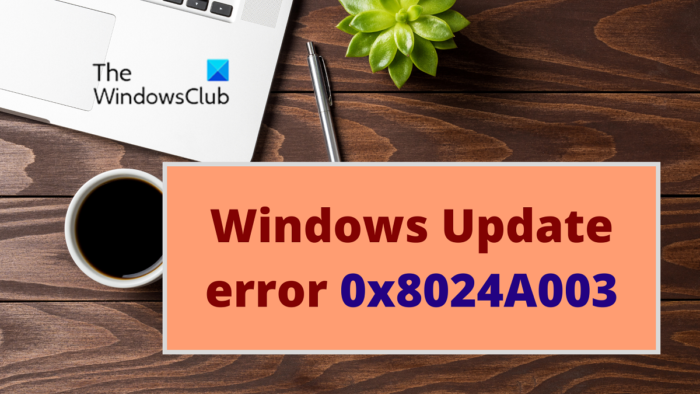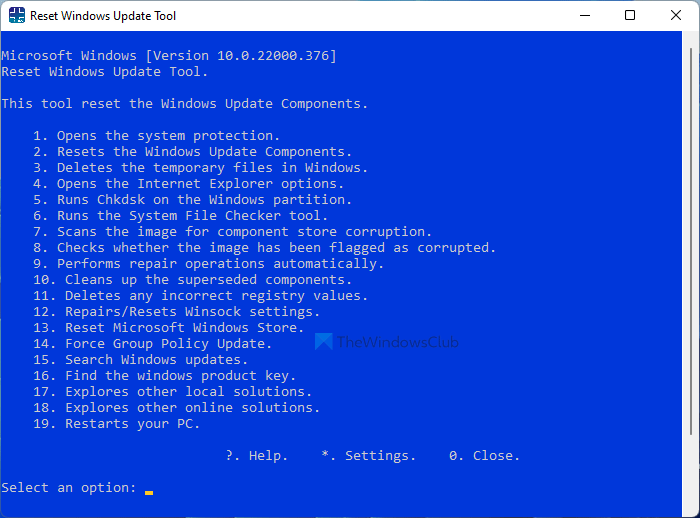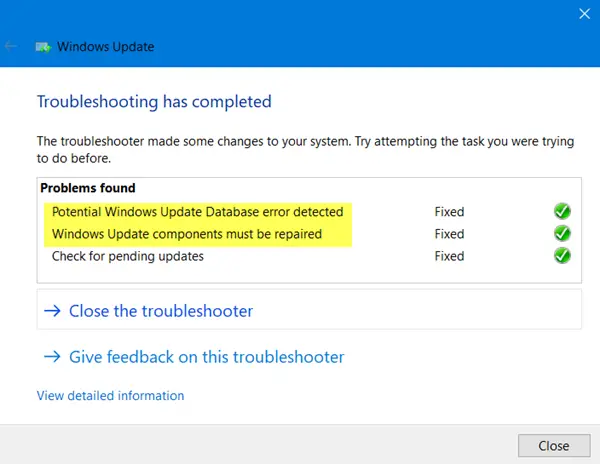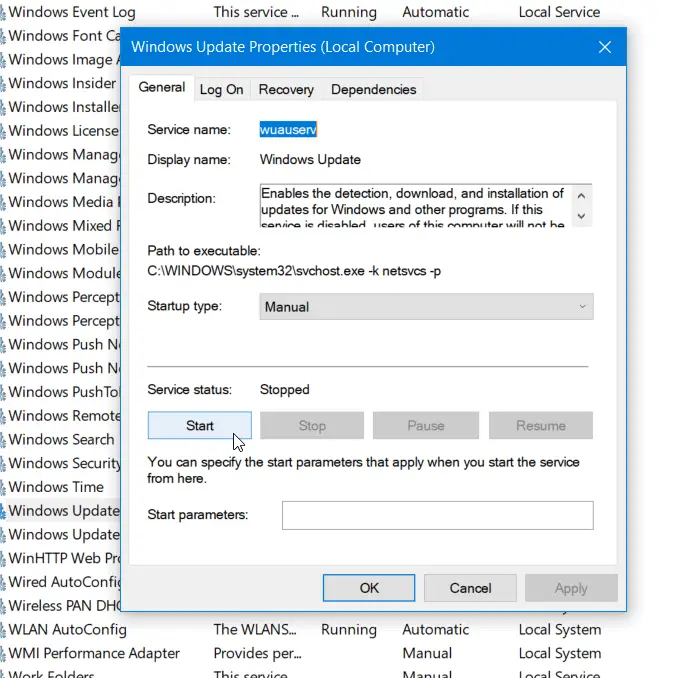Windows Updates are necessary for pushing security and other updates on Windows systems. However, at times, while trying to update Windows, users encounter the error code 0x8024A003. If you face the same issue, please read this article for the resolutions.
0x8024A003 -2145083389 WU_E_AU_LEGACYCLIENTDISABLED The old version of the Automatic Updates client was disabled

Fix Windows Update Error 0x8024A003
The main causes of error 0x8024A003 are corrupt or outdated Windows Update components or inconsistent Service configuration. You can try the following solutions sequentially to resolve the error in discussion:
- Reset Windows Update components
- Run the Windows Update troubleshooter
- Check Windows Update related Service configurations
- Download and install updates manually
1] Reset Windows Update components
The first solution is to reset Windows Update components manually. The best part of this solution is that it will also help in clearing the contents of the SoftwareDistribution folder and all necessary services will be restarted by the end of the procedure.

You may also use the Reset Windows Update Tool to restore settings & components to default automatically.
Other tools:
- Reset Windows Update Agent Tool will reset & repair all WU related components & registry keys, detect corruptions, replace corrupted system files, fix corrupted system image, Reset Winsock settings and so on.
- This PowerShell Script will help you Reset Windows Update Client.
2] Run the Windows Update troubleshooter

Windows provides users with a built-in troubleshooter to handle issues related to Windows Updates. You can invoke it as follows.
- Right-click on the Start button and select Settings from the menu.
- In the Settings window, go to the System tab on the list on the left-hand side.
- In the right pane, select Troubleshoot.
- In the next window, select Other Troubleshooters.
- Lastly, click on Run corresponding to the Windows Update troubleshooter.
3] Check Windows Update related Service configurations
Open Windows Services Manager and check the Windows Update related Services like Windows Update, Windows Update Medic, Update Orchestrator Services, etc are not disabled.
The default configuration on a standalone Windows 11/10 PC is as follows:
- Windows Update Service – Manual (Triggered)
- Windows Update Medic Services – Manual
- Cryptographic Services – Automatic
- Background Intelligent Transfer Service – Manual
- DCOM Server Process Launcher – Automatic
- RPC Endpoint Mapper – Automatic
- Windows Installer – Manual.
This will ensure that the required Services are available.
Apart from the direct service, you should find the dependencies of Windows Update service and ensure if they are running or not.
To get started, search for “services” in the Taskbar search box and click on the search result. After opening the Services window, find out Windows Update, DCOM Server Process Launcher, and RPC Endpoint Mapper. Check if they are running or not.

If not, you need to start those services one after one.
4] Download and install updates manually
If everything else fails, you can consider downloading the Windows Updates manually from the Microsoft Update Catalog site and installing them on your system. The procedure is as follows.
- Go to the linked page on catalog.update.microsoft.com.
- In the search bar, type the latest year and month in yyyy-mm format. Eg. If the latest update in my case would be in August 2022, I would type 2022-08. Hit Enter.
- The results would be in sequence with the latest update first.
- Click on Download corresponding to the latest update.
- The next page will show a link. Click on that too. The update file will start downloading. It will be a .msu file.
- Now all you need to do is click on the downloaded file and it will start installing the update.
How to fix the error This update is not applicable to your system?
When you download updates manually from the Microsoft Update Catalog, it might not show the updates for the current month. Now in case you know the exact KB number of the latest update, you can download and install it. If not, then you can install updates for the previous month and it will still be fine. However, if your system is already updated to a later date, then you will encounter the error This update is not applicable to your system.
How do I check Windows for updates?
The procedure to update Windows is as follows – Right-click on the Start button and select Settings from the menu. In the Settings menu, go to Windows Update and click on Check for updates in the right pane. Then wait for a while till your system updates to the latest version. Alternatively, you can consider updating Windows manually from the Microsoft update catalog website. This has been explained earlier in solution 5.
How long does it take to update Windows?
The time needed for updating Windows entirely depends on the number of pending updates and the speed of the internet connection. Usually, if you are regular with updating your system regularly, then a new update over a good bandwidth would need 5 to 10 minutes on average.
Leave a Reply